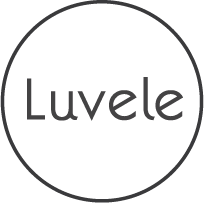Your Cart is Empty
Add description, images, menus and links to your mega menu
A column with no settings can be used as a spacer
Link to your collections, sales and even external links
Add up to five columns
Add description, images, menus and links to your mega menu
A column with no settings can be used as a spacer
Link to your collections, sales and even external links
Add up to five columns

New improved L Reuteri Fermented Dairy (Yogurt) method
Barb Hodgens
Barb Hodgens loves to cook with alternative, healthy whole food ingredients, with a focus on gut health. Barb has overcome her own gut health issues through healthy eating. Share your ideas, comments and photos at the end of this post :)
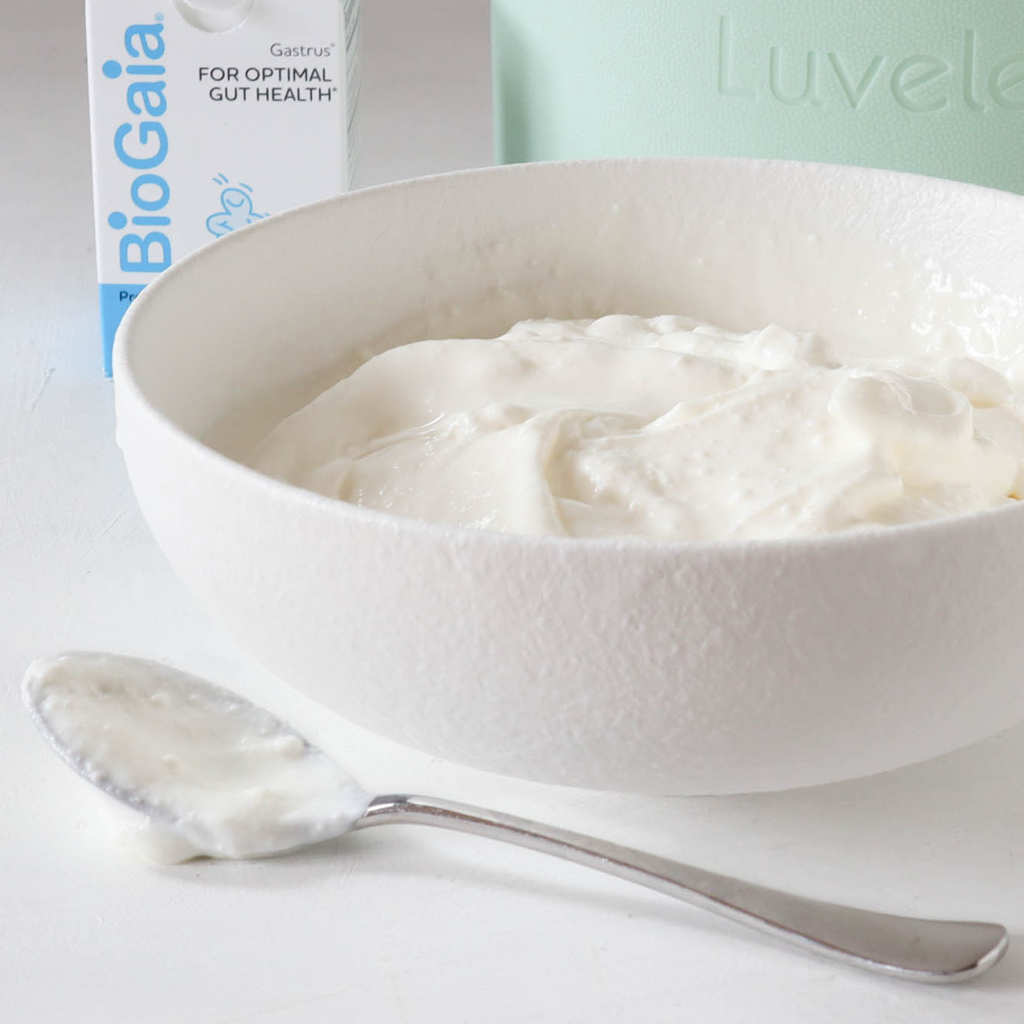
Improve the texture with one extra step!
Making fermented dairy with L reuteri probiotic can and will lead to inconsistent results, it is simply the nature of this probiotic when fermenting in dairy. Separated batches is when the whey separates from the curds, it is very common and should not necessarily be seen as a failure. Many will describe a separate batch as smelling and tasting cheesy.
Remember you are not making traditional yogurt, but fermented dairy, it can and will produce inconsistent results. A separated batch is ok to eat and you can use a separated batch as a starter for the next batch.
Here is a video where we discuss this topic.
IT’S ALL IN THE MILK
Dr Davis created his method using half and half milk, which is a full-fat milk commonly available in America (in the UK and Europe, it’s known as ‘half cream’). Half and half is a blend of equal parts whole milk and light cream. If half and half milk is available in your area, we recommend you follow Dr Davis original method. From our feedback, this method produces reliable results. If half-and-half milk is not available in your country, use UHT (long life milk) choose organic milk, that is free of pesticides, hormones, antibiotics, fertilisers and GMOs and follow the next step.
HEATING THE MILK
Traditional yogurt making practises have always heated the milk first. Heating and holding milk at 82° C (180° F) for 20 minutes (or longer) denatures the milk proteins so that they bind and set together. In addition to this, the little bit of evaporation and concentration that occurs during the extended heating helps to improve the texture.
Including this step before adding the probiotic bacteria and prebiotic powder made a profound difference to the structure and texture of our L. reuteri yogurt. Without heating, our first attempts with homemade half and half milk produced fragile and thin yogurt with lots of separated whey.
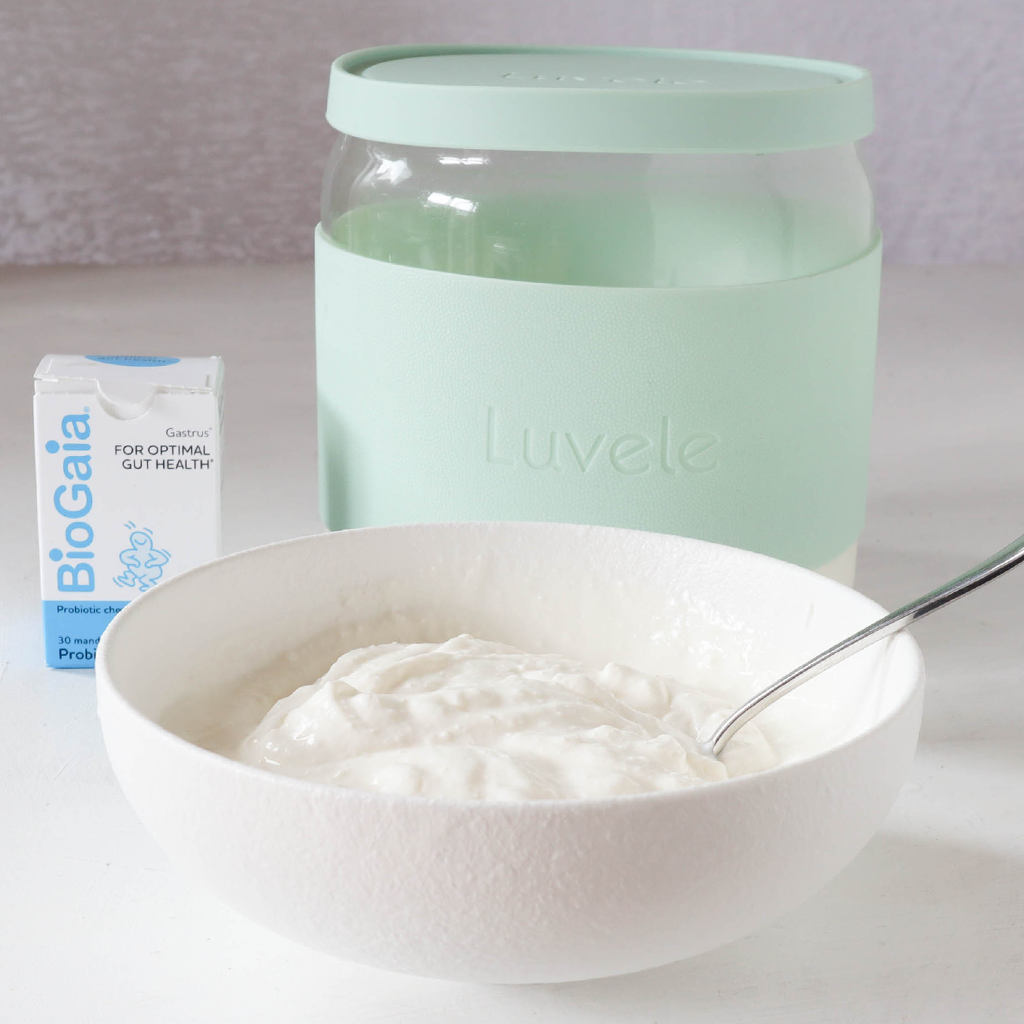
CONSISTENCY
Despite heating the milk, it’s still not unusual for the first batch to have the consistency of drinking yogurt or turn out separated. Both are perfectly consumable. A separated jar contains the same quantity of beneficial bacteria as a non-separated jar. The L. Reuteri are present in both the solids (curds) and the translucent liquid (whey), and therefore both should be consumed. You can either stir the whey into the curd for a thin yogurt or strain it off. Whey is highly nutritious and can be used in a variety of health-giving ways. Adding it into smoothies is a delicious way to get a probiotic boost. For more creative ideas refer to this post. Subsequent batches will be thicker.
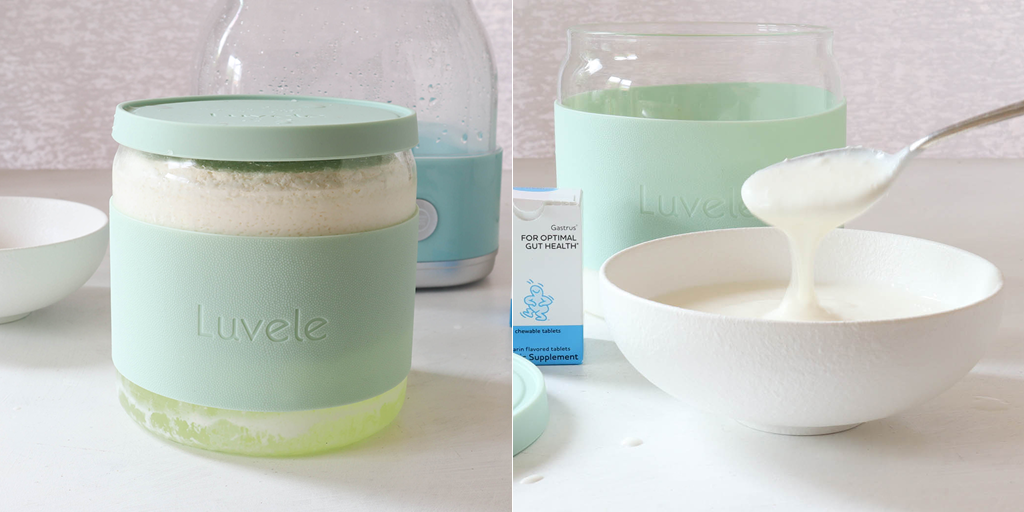
SEEDING THE NEXT BATCH
A portion of your first jar of L. reuteri yogurt – the ‘mother batch’ - can then be used to re-inoculate your next jar of L.reuteri yogurt. This means that when preparing your next batch, you simply replace the 3 (or more) crushed tablets with a third a cup of L. reuteri yogurt. It is also possible to freeze a portion of yogurt or whey and use at a later time.
To ensure the L reuteri strains stay pure and uncontaminated, we recommend re-inoculation not occur indefinitely. To ensure the yogurt stays abundant with the L. reuteri strains, and not a breeding ground for other, unwanted bacteria, we recommend starting a fresh mother batch after 4-5 re-inoculations. If you notice any significant changes to the texture, smell or taste of your yogurt, you should do this sooner.
To keep the strains in abundance, some customers suggest adding 1 crushed probiotic tablet with the third of a cup L. reuteri yogurt or whey.

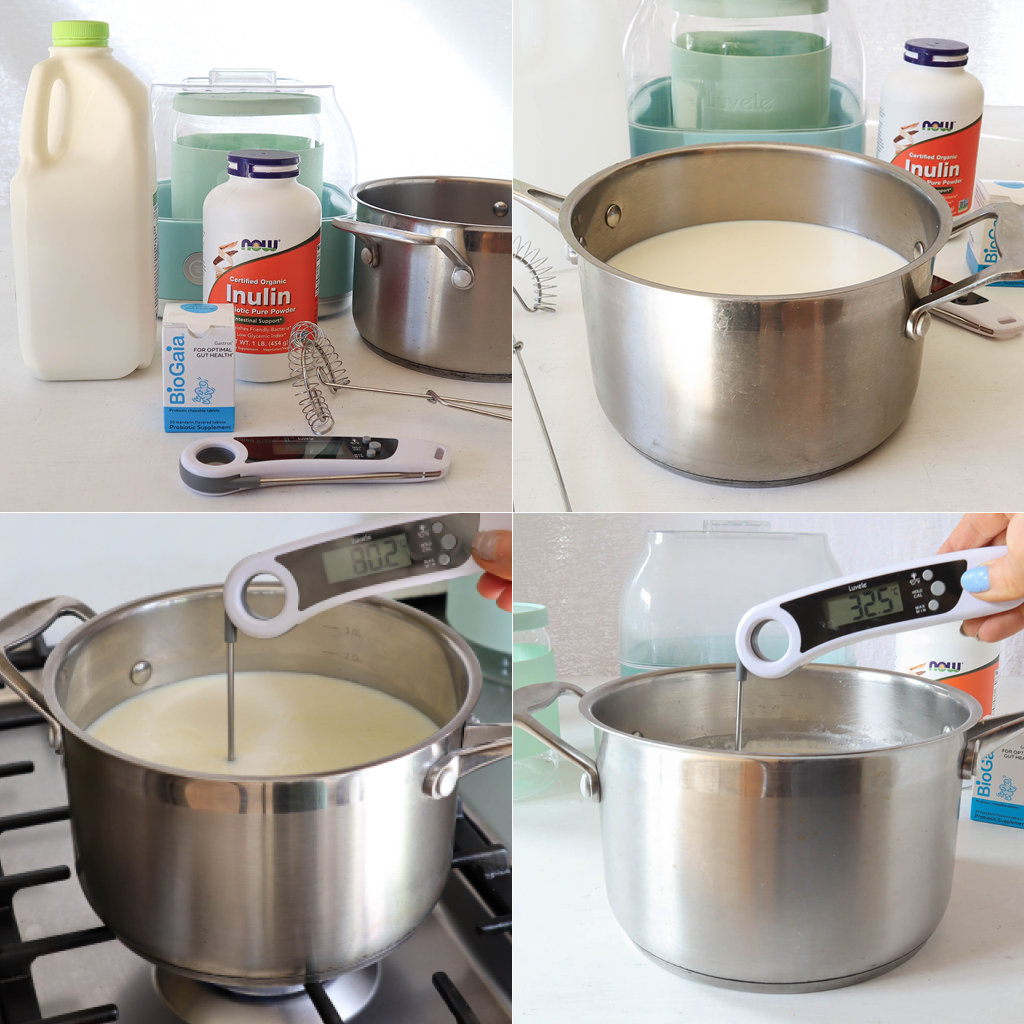
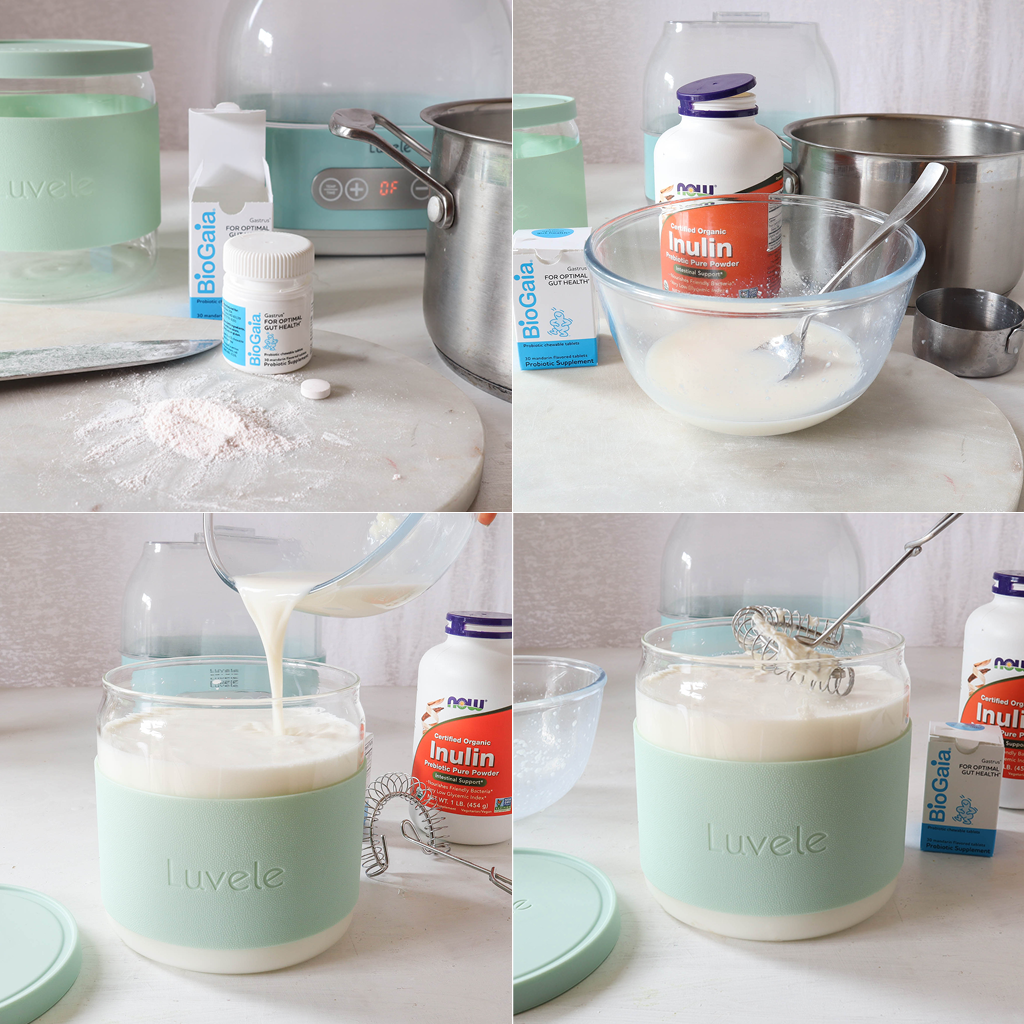
Quantity: The recipe below makes 1 litre of yogurt. Double the ingredients to fill the capacity of the Luvele yogurt maker jar.
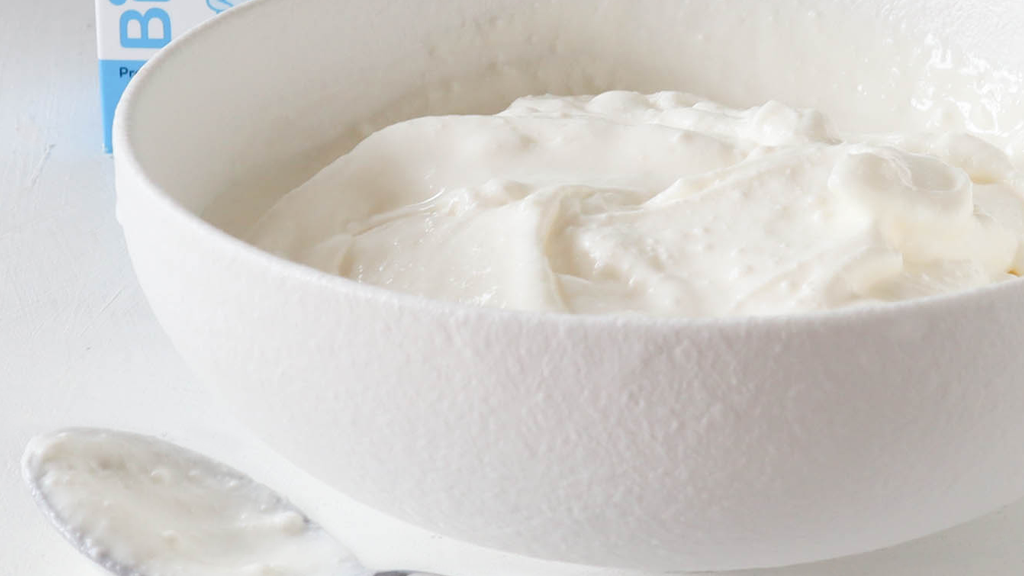
New improved L Reuteri yogurt method
Luvele
Rated 4.5 stars by 26 users
Mastering Dr William Davis’s homemade yogurt made with the probiotic ‘Lactobacillus Reuteri’ has been no easy feat. We empathise with your failed attempts because we’ve had plenty along the way too. No one really wants to eat thin and separated yogurt, do they? As we always do, the Luvele kitchen has continued to experiment and we have now discovered a key step that makes all the difference.
Ingredients
1 Litre of full cream milk
2 tablespoons pure organic inulin powder (or prebiotic powder of your choice)
3 tablets of BioGaia Gastrus, crushed or 1/3 cup of L.reuteri yogurt or whey from a previous batch
Before you begin it is important to sterilise the Luvele yogurt making glass jar, lid and any utensils you use, in boiling hot water. Do this by boiling a kettle and carefully pour the hot water over the equipment. Do not submerge equipment in boiling water. The danger of not sterilising is that other bacteria may overpower your culture and affect the quality of your yogurt.
NEW IMPROVED METHOD
PREPARATION
Directions
- Pour the milk into a large clean saucepan.
Place the saucepan on the stove top and heat the milk to 82° C (180° F) Use a thermometer for an accurate reading.
Hold the milk at this temperature for 20 – 30 minutes. It can be a challenge to hold the milk at a high temperature for so long. We recommend using a double boiler pot filled with boiling water. Don’t get too caught up on the precise temperature. If the milk accidentally boils briefly, don’t panic – reduce the heat and continue.
Remove from the stove
Cover the milk & let cool to below 42° C (107° F). You can actively cool it by filling a sink, or bowl with cold water and setting the pot of heated milk in the cold water. It is fine if the milk cools down below 42° or even goes cold, it just mustn't be too hot. Temperatures above 43° C will kill the L. reuteri strains. As the milk cools, a layer of skin will form on the top. There is no harm leaving it in. It does not produce lumpy yogurt.
- Pour 1/3 cup of preheated and cooled milk into a small ceramic bowl.
Pour the remaining milk into the yogurt making glass jar.
Add the inulin powder to the small bowl of milk and mix to form a slurry. Note: It will have a gluey consistency and may not incorporate.
Add the probiotic starter - one of the below methods:
a) Crush 3 BioGaia Gastrus probiotic tablets into a fine powder using a mortar and pestle, or other hard object on a clean, dry surface. Add the crushed probiotic powder to the milk & inulin slurry and mix in. The inulin will cause an inconsistent texture in the slurry. Don't worry. Pour the mixture into the jar of milk and whisk to incorporate.
b) Add 1/3 cup of L. reuteri yogurt or whey from a previous batch (frozen and defrosted may be used) to the slurry and mix in. Pour the slurry into the jar with the milk and whisk to incorporate.- Put the lid firmly on the yogurt making jar and place into the yogurt maker. Pour water slowly into the base. The water must not be filled over the ‘tall line’ indicated on the inside wall of the maker. Place the cover lid on top.
The milk is now ready to begin fermentation. Use the digital control panel to set the temperature to 36°C and the time to 24-hours and then press ‘confirm’ to begin incubation. New models have a 36-hour timer
After 24 hours the timer will go off. Reset the timer for another 12 hours if you like.
Condensation will have collected under the cover lid during fermentation. Take care removing it and allow the water to drip into the water bath, instead of your bench.
Switch the yogurt maker off and remove the yogurt jar. Straight from the maker the L. reuteri yogurt will be warm. Do not stir the yogurt while it is warm or else is will not set in a perfect mass.
Depending on the milk you used, your yogurt may have a thin layer of cream on top. Bonus, this is delicious!
Place the yogurt in the fridge for at least 6 hours to set then enjoy.
Don’t forget to reserve a third of a cup of yogurt or whey for your next batch of yogurt!Click here for our delicious, step by step coconut yogurt L.reuteri method.
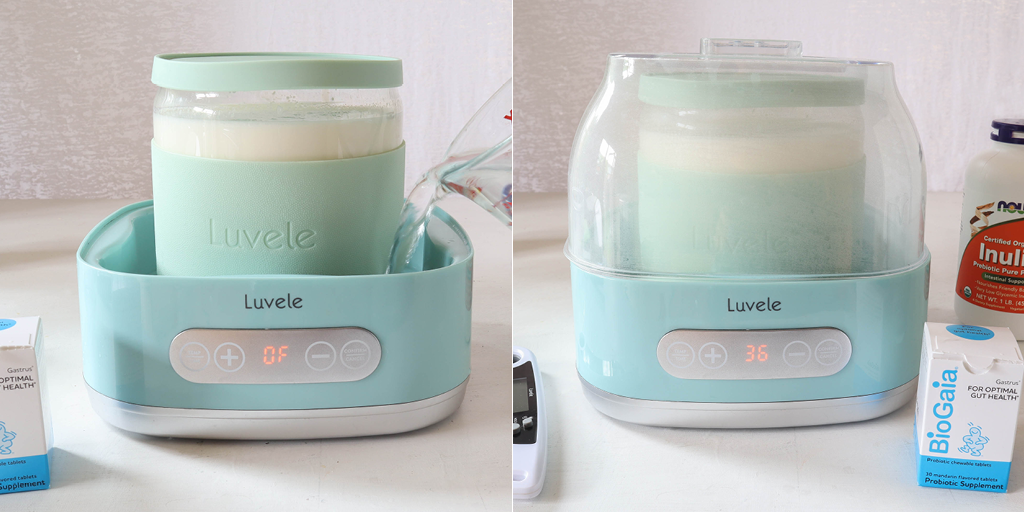
PIN THIS RECIPE
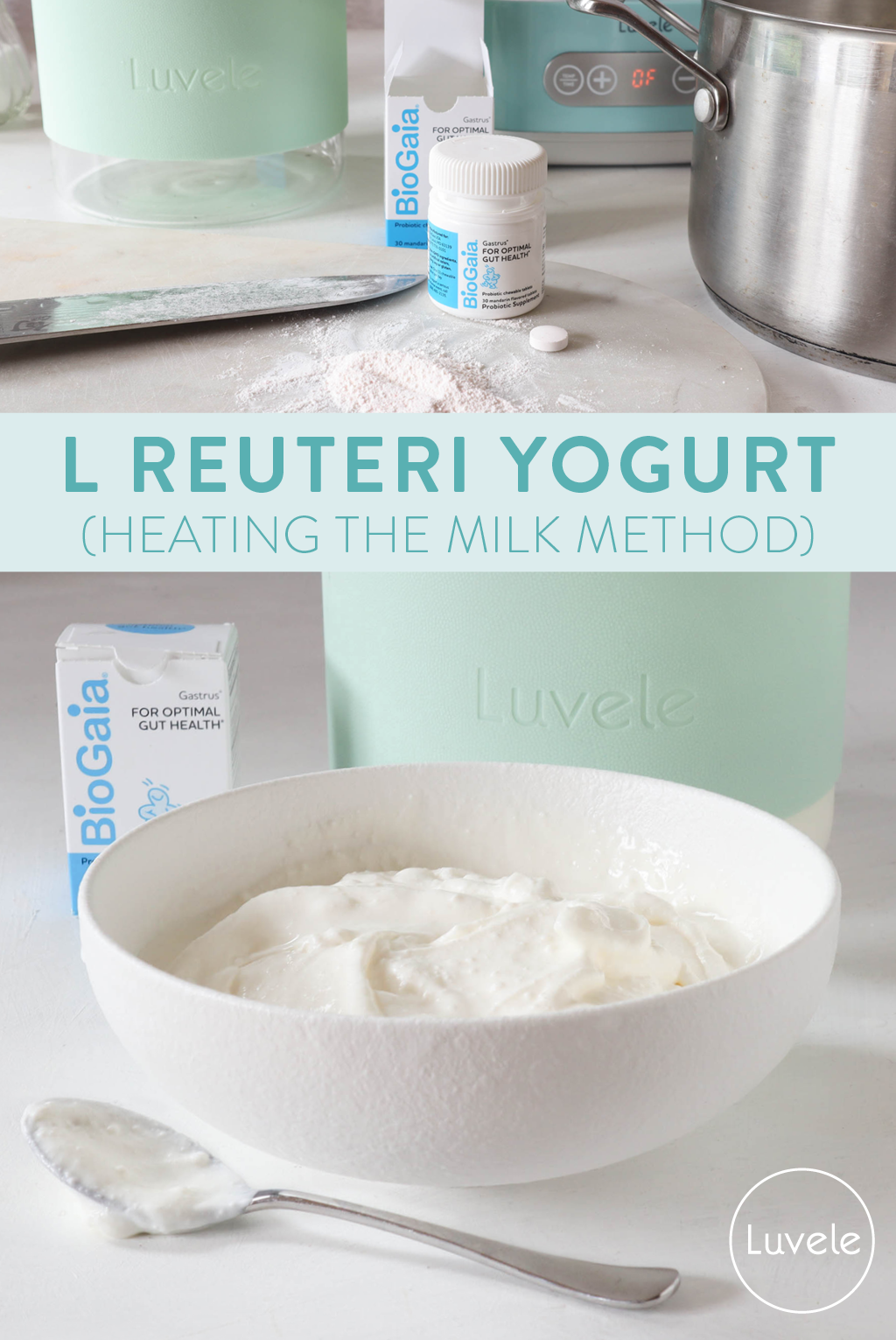

New improved L Reuteri Fermented Dairy (Yogurt) method

Improve the texture with one extra step!
Making fermented dairy with L reuteri probiotic can and will lead to inconsistent results, it is simply the nature of this probiotic when fermenting in dairy. Separated batches is when the whey separates from the curds, it is very common and should not necessarily be seen as a failure. Many will describe a separate batch as smelling and tasting cheesy.
Remember you are not making traditional yogurt, but fermented dairy, it can and will produce inconsistent results. A separated batch is ok to eat and you can use a separated batch as a starter for the next batch.
Here is a video where we discuss this topic.
IT’S ALL IN THE MILK
Dr Davis created his method using half and half milk, which is a full-fat milk commonly available in America (in the UK and Europe, it’s known as ‘half cream’). Half and half is a blend of equal parts whole milk and light cream. If half and half milk is available in your area, we recommend you follow Dr Davis original method. From our feedback, this method produces reliable results. If half-and-half milk is not available in your country, use UHT (long life milk) choose organic milk, that is free of pesticides, hormones, antibiotics, fertilisers and GMOs and follow the next step.
HEATING THE MILK
Traditional yogurt making practises have always heated the milk first. Heating and holding milk at 82° C (180° F) for 20 minutes (or longer) denatures the milk proteins so that they bind and set together. In addition to this, the little bit of evaporation and concentration that occurs during the extended heating helps to improve the texture.
Including this step before adding the probiotic bacteria and prebiotic powder made a profound difference to the structure and texture of our L. reuteri yogurt. Without heating, our first attempts with homemade half and half milk produced fragile and thin yogurt with lots of separated whey.

CONSISTENCY
Despite heating the milk, it’s still not unusual for the first batch to have the consistency of drinking yogurt or turn out separated. Both are perfectly consumable. A separated jar contains the same quantity of beneficial bacteria as a non-separated jar. The L. Reuteri are present in both the solids (curds) and the translucent liquid (whey), and therefore both should be consumed. You can either stir the whey into the curd for a thin yogurt or strain it off. Whey is highly nutritious and can be used in a variety of health-giving ways. Adding it into smoothies is a delicious way to get a probiotic boost. For more creative ideas refer to this post. Subsequent batches will be thicker.

SEEDING THE NEXT BATCH
A portion of your first jar of L. reuteri yogurt – the ‘mother batch’ - can then be used to re-inoculate your next jar of L.reuteri yogurt. This means that when preparing your next batch, you simply replace the 3 (or more) crushed tablets with a third a cup of L. reuteri yogurt. It is also possible to freeze a portion of yogurt or whey and use at a later time.
To ensure the L reuteri strains stay pure and uncontaminated, we recommend re-inoculation not occur indefinitely. To ensure the yogurt stays abundant with the L. reuteri strains, and not a breeding ground for other, unwanted bacteria, we recommend starting a fresh mother batch after 4-5 re-inoculations. If you notice any significant changes to the texture, smell or taste of your yogurt, you should do this sooner.
To keep the strains in abundance, some customers suggest adding 1 crushed probiotic tablet with the third of a cup L. reuteri yogurt or whey.



Quantity: The recipe below makes 1 litre of yogurt. Double the ingredients to fill the capacity of the Luvele yogurt maker jar.
:recipekit:

PIN THIS RECIPE


Subscribe
Sign up to get the latest on sales, new releases and more …
